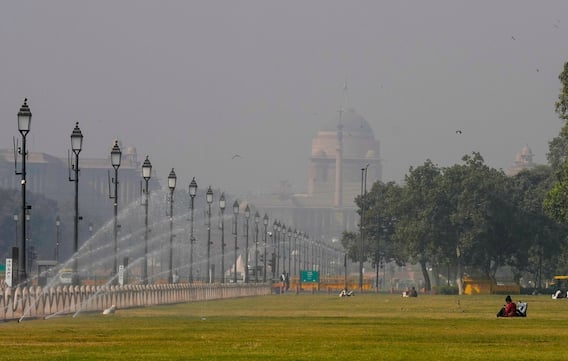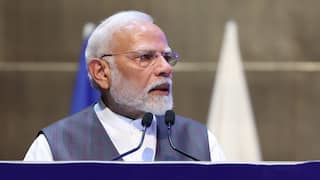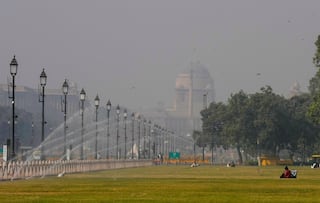Hypertension: Number Of People Living With High Blood Pressure Has Doubled Globally In 30 Years, Study Says
In India, percentage of adults (30-79 yrs) living with hypertension up from 25.52% in 1990 to 30.59% in 2019 in men & from 26.53% to 29.54% in women, international study published in The Lancet says.

New Delhi: The number of adults living with hypertension worldwide has doubled over the last 30 years — from an estimated 331 million women and 317 million men in 1990 to 626 million women and 652 million men in 2019. And most of this increase is occurring in low- and middle-income countries, a new study has found.
Researchers from the Imperial College London and WHO analysed blood pressure measurements of more than 100 million adults aged 30-79 years, taken over three decades in 184 countries including India, for the international study, which has been published in The Lancet.
The study found that the percentage of Indian adults (aged 30-79 years) suffering from hypertension has significantly increased in the last three decades. The prevalence of the disease increased from 25.52 per cent in 1990 to 30.59 per cent in 2019 in Indian men, and from 26.53 per cent to 29.54 per cent in Indian women.
Data from 1,201 population representative studies, involving 104 million people from 184 countries, was analysed by the Non-Communicable Disease Risk Factor Collaboration (NCD-RisC).
The authors used modelling to estimate the prevalence of this condition, the proportion of people suffering from it, the percentage of people treated earlier, and whose condition was controlled, by country, age and year.
They noted that comparable estimates could be affected by a lack of data in some countries, especially in Oceania and sub-Saharan Africa.
What Is Hypertension?
A patient is diagnosed with hypertension when their systolic blood pressure is 140 mm Hg or greater, and the diastolic blood pressure is 90 mm Hg or greater. Systolic blood pressure is the first number that indicates how much pressure your blood is exerting against the artery walls when the heart beats, while diastolic pressure indicates the amount of this pressure while the heart rests between beats.
Hypertension which can be easily diagnosed and treated, and the drugs are inexpensive. Yet, the study found, nearly half of people (41 per cent of women and 51 per cent of men) worldwide were unaware that they were suffering from the condition, and about 53 per cent women and 62 per cent men didn't get any treatment for it. The percentage of people who were able to control hypertension, with medicines effective in bringing blood pressure to normal ranges, was found to be quite less — fewer than 1 in 4 women and 1 in 5 men.
However, with universal health coverage expanding and primary healthcare having been strengthened, the study pointed out, the treatment and control of hypertension has improved in some middle-income countries such as Costa Rica, Kazakhstan, South Africa, Turkey, Iran and Brazil.
According to the study, about 8.5 million deaths occur annually due to hypertension, and it increases the risk for diseases like Ischaemic heart disease and other cardiovascular and renal issues. The number of strokes, heart attacks, and heart failures can be reduced if blood pressure is decreased.
According to Professor Majid Ezzati, Imperial College, London, UK, a senior author of the study, national governments and international donors should make efforts towards improving the detection, treatment and control of hypertension in low- and middle-income countries, to es=nsure prevention of this disease.
He also said that most of the people suffering from hypertension do not receive any treatment, especially in low- and middle-income countries, and hence there should be policies to improve diagnosis, and efforts to ensure uninterrupted access to drugs, encourage consumption of healthier foods having less salt, and increase the availability and affordability of fruits and vegetables.
Global Age-Standardised Prevalence Largely Unchanged
The prevalence of hypertension in adults, by age, has remained almost the same over the last three decades. However, there has been a substantial drop in the percentage of adults suffering from hypertension in high income countries such as Germany, Canada, the UK, Spain, and Switzerland. There has also been an increase in the prevalence of hypertension cases in LMICs, like Oceania.
The countries where the lowest hypertension rates were observed in women (less than 24%) are Taiwan, South Korea, Japan and some countries in Western Europe. The lowest rates in men (less than 25%) were observed in Eritrea, Ethiopia, Bangladesh and the Solomon Islands. Around 1 in 4 people were suffering from hypertension in countries like Canada and Peru in 2019.
The proportion of adults suffering from hypertension in 2019, was high in countries like Paraguay and Tuvalu, with the disease detected in more than 50 per cent women. In countries of central and eastern Europe, like Hungary, Poland, Lithuania, Romania, Belarus and Croatia, and other nations like Argentina, Tajikistan, and Paraguay, more than 50 per cent of men were diagnosed with hypertension.
Treatment And Control In Poorest Countries
High income countries like Iceland, South Korea and Canada had treatment levels of more than 70 per cent, and control greater than 50 per cent in 2019, as a result of which the improvement percentage of hypertension was more than 30 per cent. Also, in upper-middle and middle-income countries like Costa Rica, the condition of almost 50 per cent of the adults with hypertension was controlled in 2019.
However, in LMICs like Oceania, Indonesia, Nepal, and sub-Saharan Africa, less than 25 per cent of women and less than 20 per cent of men with hypertension received treatment in 2019. Also, blood pressure was well controlled in fewer than 10 per cent of the people who received treatment.
Leanne Riley from WHO, Switzerland, who is a co-author of this study, warned that the risk for vascular and kidney diseases will increase in countries like sub-Saharan Africa, Oceania and South Asia, because the detection and treatment rates are very low in the poorest nations. She also said the detection and treatment capacity of these countries should be increased.
In a comment linked to the study, Dr Clara Chow from the University of Sydney, Australia, said that innovative technologies must be implemented to decrease the global burden of hypertension, and that better strategies in blood pressure diagnosis and management are needed. She also added that the prevalence rates are much higher than the rates at which people are being treated, and hence, local implementation must be monitored closely.
Chow suggested that digital transformation such as telemonitoring, home blood pressure monitoring, text message reminders to improve adherence, and other digital health techniques must be used to encourage healthy behaviours. She warned that if the prevalence of hypertension remains unchecked, more people with hypertension would suffer from cardiovascular diseases because the global prevalence has remained stagnant and the control rate is as low as 20 per cent.
WHO Releases New Guideline For Hypertension Treatment
The ‘WHO Guideline for the pharmacological treatment of hypertension in adults’, “the first in 20 years”, was released on Wednesday and it provides new recommendations for countries to improve the management of hypertension.
Dr Taskeen Khan of the Department of Noncommunicable Diseases, WHO, who led the guideline development, said the new global guideline on the treatment of hypertension provides the “most current and relevant evidence-based guidance on the initiation of medicines for hypertension in adults”.
The recommendations guide on when to start medication, what type of medicine or combination to use, why should be the target blood pressure level, and how often one should have follow-up checks.
Dr Bente Mikkelsen, Director of WHO’s Department of Noncommunicable Diseases, said: “By following the recommendations in this new guideline, increasing and improving access to blood pressure medication, identifying and treating comorbidities such as diabetes and pre-existing heart disease, promoting healthier diets and regular physical activity, and more strictly controlling tobacco products, countries will be able to save lives and reduce public health expenditures.”
Check out below Health Tools-
Calculate Your Body Mass Index ( BMI )
Trending News
Top Headlines






































